
How to Choose the Perfect Hiking Backpack
Choosing the right hiking backpack can really make or break your trip. A thoughtfully designed pack keeps you comfortable, organized, and ready for whatever the trail throws at you. The best hiking backpack fits your body, matches the trip’s length, and balances weight without skimping on key features.
Let’s break down the main types of hiking backpacks, what features actually matter, and how to pick one for your own adventures. I’ll also touch on packing tips, gear maintenance, and a few trusted brands offering more sustainable options.
Table of Contents
- Types of Hiking Backpacks
- Daypacks
- Overnight Backpacks
- Multi-Day Backpacks
- Key Features to Consider
- Capacity and Volume
- Fit and Adjustability
- Weight and Materials
- Choosing the Right Hiking Backpack
- Assessing Your Hiking Needs
- Backpack Sizing Guide
- Gender-Specific Designs
- Essential Components of a Backpack
- Suspension System
- Hip Belt and Shoulder Straps
- Ventilation and Padding
- Packing Tips for Hiking Backpacks
- Organizing Gear
- Weight Distribution
- Accessibility and Compartments
- Care and Maintenance
- Cleaning Your Backpack
- Storage Recommendations
- Top Brands and Models
- Sustainability and Eco-Friendly Options
- Book Your Dream Experience
- More Travel Guides
Types of Hiking Backpacks
Backpack designs aren’t one-size-fits-all. The right pack depends on your trip length, how much gear you’re hauling, and the kind of terrain you’ll cross. Weight capacity, frame style, and layout all play a part in keeping you comfortable and organized out there.
Daypacks
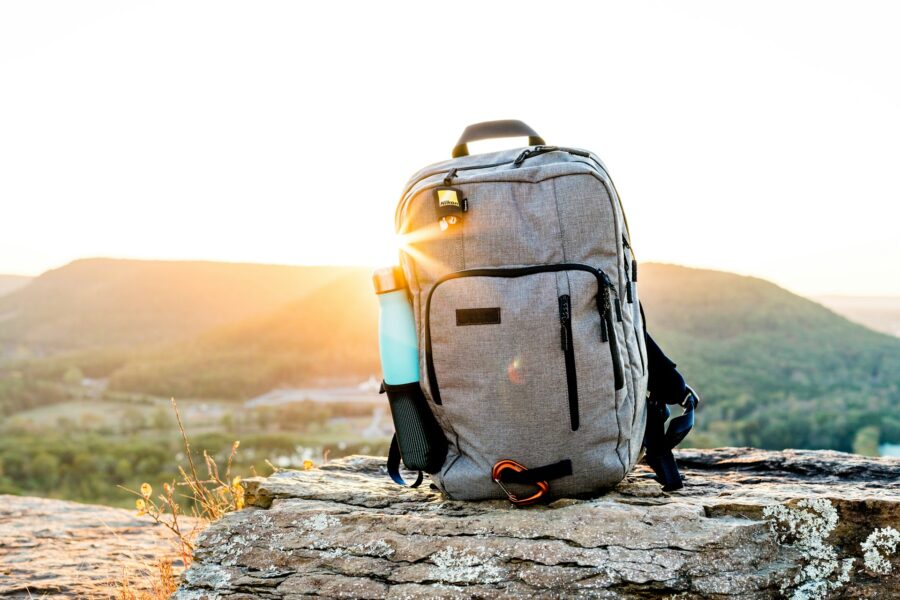
Daypacks are perfect for short hikes or day trips when you don’t need much. They usually fit 15–35 liters and focus on lightweight materials and simple layouts. Expect a main compartment, hydration sleeve, and small pockets for stuff like snacks, maps, or a first-aid kit.
Most daypacks skip the heavy frame, going for frameless or semi-rigid back panels that keep things flexible and airy. Adjustable shoulder and sternum straps help spread out the weight. Some even come with hydration ports for water reservoirs.
For day hikes, fit and ventilation usually beat load capacity. These packs are compact enough for city use or as a handy travel carry-on, too.
| Feature | Typical Range |
|---|---|
| Capacity | 15–35 L |
| Frame Type | Frameless or light internal frame |
| Ideal Use | Short hikes, daily use |
Overnight Backpacks
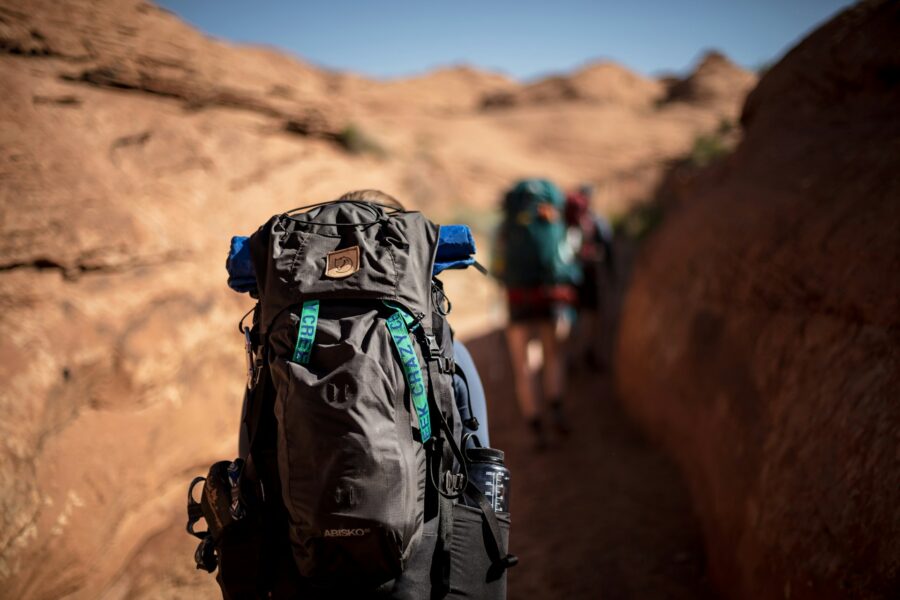
Overnight packs fit 35–55 liters, striking a good balance between space and mobility. You’ll have room for a sleeping bag, food, and a change of clothes for one or two nights. Lightweight internal frames give the pack structure without making it bulky.
Look for multiple access points—top lids or front zippers—for easier packing. Compression straps keep your gear from shifting as you move.
A proper hip belt shifts weight off your shoulders and onto your hips, which is way more comfortable, especially on uneven ground. Some packs let you remove the lid or expand the collar for extra space when you need it.
| Feature | Typical Range |
|---|---|
| Capacity | 35–55 L |
| Frame Type | Internal frame |
| Ideal Use | One- to two-night trips |
Multi-Day Backpacks
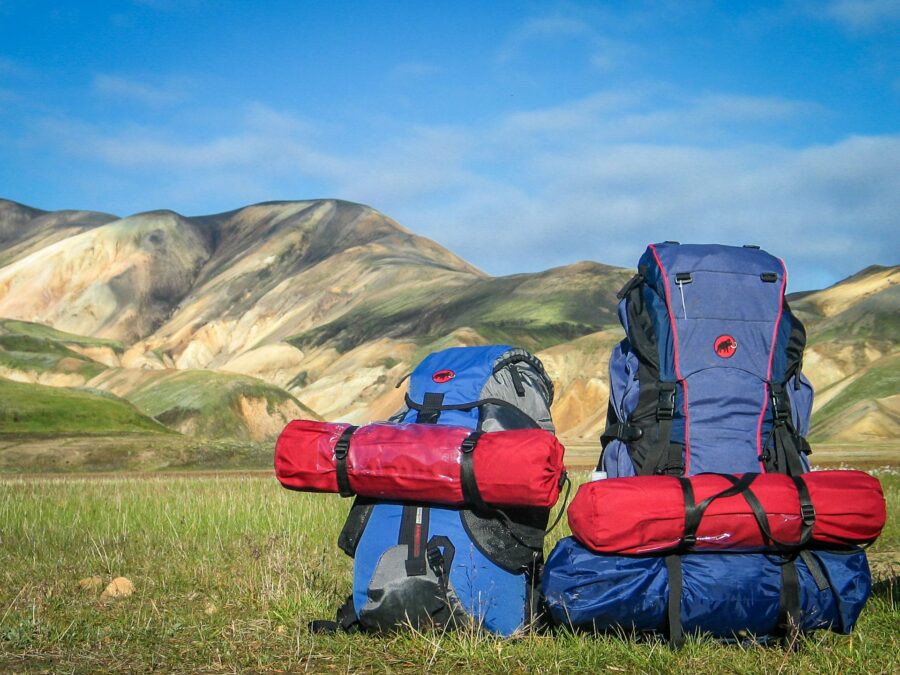
Multi-day packs are built for longer trips—think several days or more. They usually range from 55–80 liters and use rigid internal or even external frames to handle heavier loads.
Expect lots of compartments, gear loops, and attachment points for tents, trekking poles, or sleeping pads. Tough fabrics and reinforced stitching help them survive rough use and tough terrain.
Getting the fit right matters a lot. Adjustable torso lengths, padded hip belts, and load-lifter straps all help keep things stable when you’re fully loaded. Ventilated back panels are a lifesaver on hot climbs.
| Feature | Typical Range |
|---|---|
| Capacity | 55–80 L |
| Frame Type | Internal or external frame |
| Ideal Use | Multi-day or expedition trips |
Key Features to Consider
A good hiking backpack isn’t just about storage—it’s about comfort and durability. The design needs to spread weight evenly, stand up to the elements, and feel good across all kinds of terrain and weather.
Capacity and Volume
Capacity tells you how much you can actually carry, measured in liters and usually falling between 20–80 L depending on your plans.
Day hikers usually stick with 20–35 L for the basics. For multi-day trips, 40–65 L gives you room for shelter and cooking gear. Expeditions or winter treks sometimes need over 70 L to fit all the extra stuff.
Some packs have expandable collars or compression straps that let you tweak the volume—handy if you’re packing light. Internal pockets and external loops help keep things organized and easy to reach.
It’s tempting to go big, but carrying too much space often means carrying extra weight you don’t need. Match the pack size to your trip and packing style.
Fit and Adjustability
Getting the fit right is huge for comfort and balance. A good pack spreads the weight between your hips and shoulders, which really helps with fatigue.
Packs come in different torso lengths. Measure from the base of your neck to the top of your hips to find your size. Many models let you tweak the harness for a custom fit.
Key adjustment spots:
- Hip belt: Should rest on your hip bones and carry most of the load.
- Shoulder straps: Should hug your shoulders without gaps.
- Load-lifter straps: Angle back to pull the weight closer to your body.
Women’s and unisex designs are shaped a bit differently, but always test the pack loaded to see how it actually feels.
Weight and Materials
Pack weight affects how far you’ll want to go. Lighter is better for endurance, but super-thin materials don’t always last.
Most packs use nylon, ripstop nylon, or Dyneema. Heavier fabrics (like 420D and up) hold up better to abrasion but add some weight. Ultralight packs often use silnylon or Dyneema Composite Fabric (DCF) for a strong but light build.
Frame style matters, too. Internal frames give you structure for bigger loads, while frameless packs suit minimalists.
Things like waterproof coatings, reinforced seams, and solid zippers help your pack last. It’s all about balancing toughness and total weight so you’re not lugging more than you need.
Choosing the Right Hiking Backpack
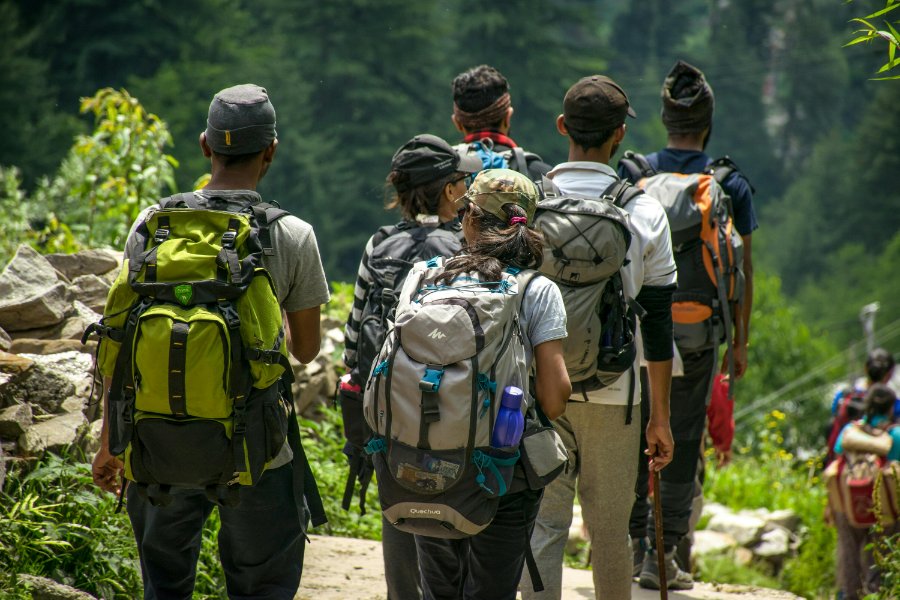
Picking a hiking backpack comes down to matching capacity, fit, and features to your trip and your body. The right pack spreads the weight, saves your back, and keeps you comfortable mile after mile.
Assessing Your Hiking Needs
Start by figuring out your typical hike. A day hike usually means a 15–30 liter pack. Multi-day trips need 40–70 liters. If you’re out for a week or more, you might want 70 liters or even bigger.
Think about climate and terrain. Wet or cold trips require more space for layers and weatherproofing. Lightweight packs work for easy trails, but rugged terrain calls for beefier frames and thicker materials.
Some features just make life easier:
- Hydration compatibility for easy water access
- External loops for trekking poles or ice axes
- Ventilated backs to help with sweat
It’s always a trade-off: more features mean more weight, so decide what you really need.
Backpack Sizing Guide
Fit makes all the difference. Focus on torso length—not your height. Most brands have size charts for this. Here’s a quick cheat sheet:
| Torso Length | Pack Size |
|---|---|
| < 16 in (40 cm) | Small |
| 16–19 in (40–48 cm) | Medium |
| > 19 in (48 cm) | Large |
The hip belt should sit right on your hips, carrying most of the weight. Shoulder straps should follow your shoulders without leaving gaps.
Adjustability is key. Look for load-lifters, sternum straps, and removable belts so you can dial in the fit. Always try the pack loaded to see how it sits on your body.
Gender-Specific Designs
Many brands offer packs shaped for men and women. Women’s packs tend to have shorter torsos, narrower straps, and curved hip belts for a better fit.
Men’s models usually have longer frames and wider straps. But honestly, go by what fits you best, not just the label. Sometimes a unisex or even an “opposite” gender pack works better for your body shape.
For comfort, pay attention to:
- Strap placement that doesn’t rub
- Hip belt padding that supports your hips evenly
- Back panel shape that matches your spine
Try a few models with real weight inside to see which one actually feels right for you.
Essential Components of a Backpack
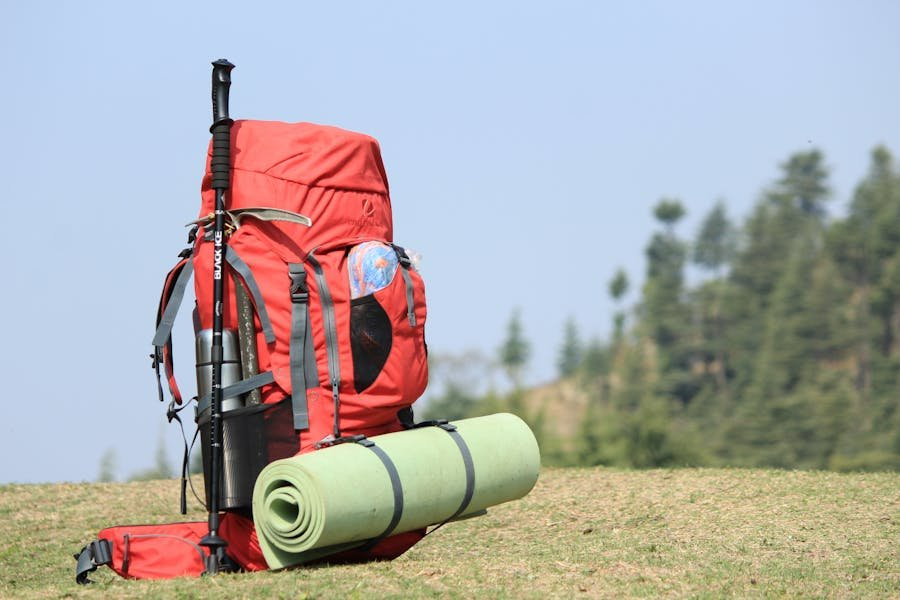
Every good pack spreads weight, supports your back, and keeps you comfortable on long days. Each part helps with balance, stability, and airflow—making a bigger difference than you might think.
Suspension System
The suspension system connects your gear to your body. It’s the frame, harness, and all those adjustment points that decide how the weight sits on your hips and shoulders. Most internal frames use aluminum or composite materials for strength and a bit of flex.
Set up right, the suspension system steadies the pack over rough ground. Adjustable torso lengths let you line up the harness with your back, which cuts down on neck and lower back strain.
Modern packs usually include load lifters and stabilizer bars to help balance things out. They keep the weight close to your center of gravity, so you don’t feel like you’re tipping over. A dialed-in suspension system really helps with posture and saves energy on big hikes.
Hip Belt and Shoulder Straps
The hip belt should carry most of the pack’s weight. It wraps around your hips, moving the load off your shoulders and onto your pelvis—way more comfortable for long distances. A good belt has firm but flexible padding for even support.
What matters in a hip belt:
- Dual adjusters for balanced tightening
- Padded wings that hug your hips
- A sturdy buckle that doesn’t pop open under stress
Shoulder straps help steady the top of the pack. They should curve along your shoulders without digging in. Sternum straps keep them in place so nothing shifts while you walk.
Once you adjust everything, your hips should carry about 70–80% of the weight, with your shoulders taking the rest. This split cuts fatigue and helps you keep good posture, even on long days out.
Ventilation and Padding
Ventilation systems help keep your back cool by letting air flow between you and the pack. Mesh panels, air channels, and suspended back designs all work to move moisture away and limit that sticky, sweaty feeling—especially if you’re hiking in warm places or tackling long climbs.
Padding brings comfort, cushioning those pressure points where packs tend to dig in. Most shoulder straps and lumbar zones use dense foam to soak up impact and cut down on friction. Some brands get clever with perforated foam or mesh-covered pads, so you get support without feeling stifled.
Common ventilation designs:
| Design Type | Description | Benefit |
|---|---|---|
| Mesh Back Panel | Fabric stretched over a frame | Maximizes airflow |
| Channel Foam | Grooved padding along the spine | Directs heat away |
| Hybrid System | Combines mesh and foam zones | Balances support and cooling |
With good ventilation and the right padding, you’ll notice less chafing and stay drier and more comfortable on the trail.
Packing Tips for Hiking Backpacks

Smart packing keeps you balanced, comfy, and able to grab what you need fast. Organizing your gear protects it from damage and spreads weight evenly, so you’re less likely to stumble or strain something on rough ground.
Organizing Gear
Taking a structured approach to packing makes life easier on the trail—no more digging for lost socks. Most hikers group gear by use—sleeping, cooking, clothing, safety—and stash each in its own dry bag or packing cube. It’s not just neater; it keeps things clean and easy to find.
Stash small stuff you’ll want often—maps, snacks, sunscreen—in top or outer pockets. Bulkier or less-used gear, like a stove or extra clothes, fits better deep inside the main compartment.
A simple table can help plan gear placement:
| Gear Type | Suggested Location | Notes |
|---|---|---|
| Food & Stove | Center of pack | Keeps weight balanced |
| Clothing Layers | Around heavy items | Provides cushioning |
| Rain Gear | Top or outer pocket | Quick access in wet weather |
| First Aid Kit | Side or lid pocket | Easy to find in emergencies |
Weight Distribution
If you want to avoid a sore back or tired shoulders, pay attention to weight distribution. Put the heaviest gear near your body’s center of gravity—think the middle of the pack, between your shoulders and hips. That way, you’re less likely to feel off-balance or exhausted on steep trails.
Lighter stuff, like a sleeping bag or spare shirt, can go at the bottom. Medium-weight items fill in the gaps and help compress everything together.
After you’ve packed, tighten those compression straps so nothing shifts around. The pack should stand up on its own and feel balanced when you lift it—if it doesn’t, try again until it does.
Accessibility and Compartments
On the trail, you don’t want to unpack everything just to find a snack. Multiple compartments, side pockets, and loops let you organize gear based on how often you’ll need it.
Water bottles, trekking poles, and rain covers are easiest to grab from outer pockets or attached loops. Anything that can’t get wet—like electronics or maps—belongs in sealed inner compartments.
Labeled pouches or color-coded bags speed up finding what you need. Keep emergency gear, like a headlamp or whistle, in a spot you can reach without digging through the whole pack.
Care and Maintenance
Taking care of your backpack means it’ll last longer, stay comfortable, and won’t start smelling funky. Regular cleaning and storing it right keep the fabric, zippers, and waterproofing in good shape.
Cleaning Your Backpack
How often you clean your backpack really depends on how much you use it and where you take it. Dirt, sweat, and oils wear down fabric and coatings over time. Usually, it’s smart to clean it after big trips or if you spot a lot of grime.
Steps for effective cleaning:
- Empty every pocket and shake out crumbs or dirt.
- Brush off loose dirt with a soft brush or cloth.
- Mix mild soap with lukewarm water—skip the bleach or heavy-duty stuff.
- Scrub gently, especially on straps and the back panel.
- Rinse well and let it air-dry in a cool, shady spot.
Don’t toss your pack in the washing machine unless the manufacturer says it’s okay. Heat and rough agitation can ruin seams, coatings, and foam. Spot-cleaning usually does the trick for lighter messes.
Zippers last longer if you run a little silicone-based lubricant over them now and then. That keeps them from sticking or rusting.
Storage Recommendations
Keep your pack in a cool, dry place—not in direct sunlight. Sunlight fades color and weakens fabric. Humid spaces, like basements, can lead to mildew or musty smells.
Before you store it, make sure it’s totally dry. Any leftover moisture can lead to mold or weird smells. Loosen the straps and take out heavy stuff so the pack doesn’t get squashed or lose its shape.
For longer storage, hang the pack or lay it flat on a shelf—don’t bury it under other gear. If you use a hydration reservoir, clean and dry it separately so bacteria doesn’t take over.
Every few months, give your pack a quick once-over for frayed stitching or worn buckles. Catching problems early saves you headaches later.
Top Brands and Models
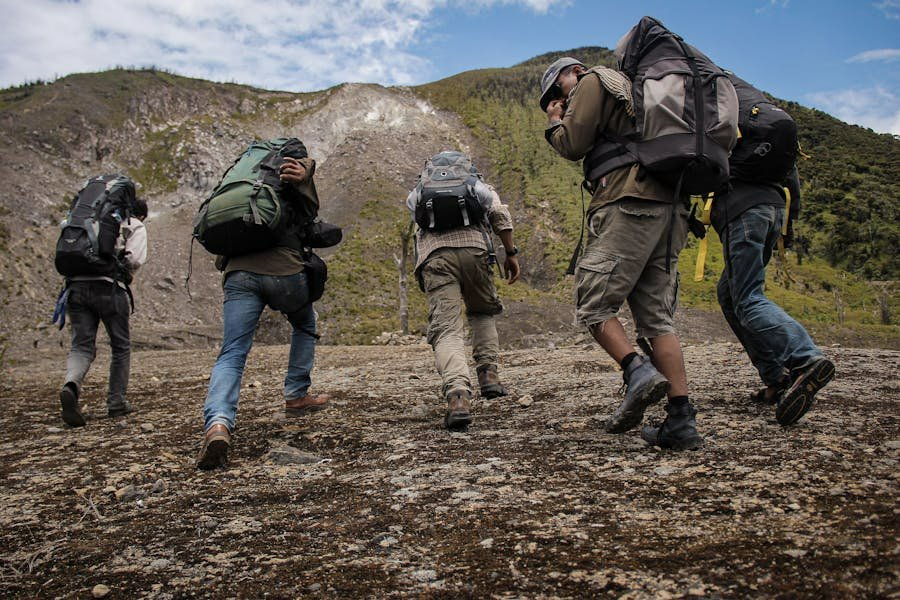
A few brands have built solid reputations for hiking backpacks that hold up, feel good, and make organizing gear less of a chore. Each has models for different types of trips and terrain.
Osprey really nails ergonomic design and adjustable suspension. The Osprey Atmos AG 65 and Osprey Tempest 30 are go-tos for multi-day adventures and quick day hikes.
Deuter puts a lot of thought into ventilation and back support. The Deuter Aircontact Lite 50+10 spreads the load well, while the Deuter Futura 28 is a solid pick if you want comfort without bulk.
Gregory focuses on fit and stability. The Gregory Baltoro 65 and Gregory Jade 38 come with plush hip belts and smart pocket layouts.
REI Co-op is a favorite for value and reliability. The REI Flash 55 and REI Traverse 60 keep things light and practical without breaking the bank.
| Brand | Notable Models | Key Features |
|---|---|---|
| Osprey | Atmos AG 65, Tempest 30 | Adjustable fit, ventilation |
| Deuter | Aircontact Lite 50+10, Futura 28 | Back support, airflow |
| Gregory | Baltoro 65, Jade 38 | Stability, comfort |
| REI Co-op | Flash 55, Traverse 60 | Value, lightweight design |
You’ll find these brands in most outdoor shops and online, and honestly, they’re a safe bet if you want something that’ll last.
Sustainability and Eco-Friendly Options
Lately, more backpack brands have started caring about reducing environmental impact with smarter materials and production. You’ll see recycled fabrics, responsibly sourced zippers, and low-impact dyes popping up as they try to cut back on waste and emissions. Is it perfect? Not yet. But it’s a step in the right direction.
Some companies are actually building packs to last longer, and even offer repair programs or easy-to-swap parts. That means less stuff ending up in the landfill and a bit more thought about what we own and keep.
Typical eco-friendly materials include:
- Recycled nylon or polyester (sometimes made from post-consumer bottles—pretty cool, right?)
- Organic cotton that skips most of the pesticides
- Bluesign®-approved fabrics, which follow tougher environmental rules
| Material Type | Environmental Benefit | Common Use |
|---|---|---|
| Recycled Polyester | Reduces plastic waste | Main body fabric |
| Organic Cotton | Lowers chemical use | Straps, linings |
| Hemp | Durable and renewable | Reinforcements |
Packaging matters, too. Some brands ditch plastic wrapping for biodegradable bags or recyclable cardboard. It’s a small change, but hey, every bit helps when it comes to single-use waste.
Honestly, it can be tricky to know which products really walk the walk. If you’re curious, look for certifications like Global Recycled Standard (GRS) or Fair Trade Certified™. Those labels actually mean something—they show a product meets certain environmental and social standards.



